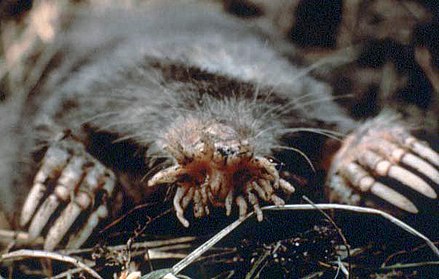Star-nosed Mole (Condylura cristata)
All_the_Best · 8 months ago
Next on our list of weirdest animals is the star-nosed mole. It is closely related to the hairy-tailed and eastern mole. The star-nosed mole is a small mammal with tiny eyes and a leaf-shaped nose. They live in almost complete darkness because they can’t see with little eyes. The star-nosed mole's uniqueness is in its name. Its nose has 22 finger-like or star-shaped tentacles. They surround its nostrils side-by-side. Each little extension measures between 0.2 and 0.5 inches. Under the microscope, scientists noticed the tentacles have 25,000 papillae coverings. The papillae coverings are sensory receptors referred to as Eimer’s organs. The receptors are the mole’s seeing eyes. They help it detect details about its surrounding environment. Scientists also discovered that the star shape of the nose mirrors the structure of its brain. The mole’s nose touches something up to 10 times per second to send a detailed imprint of its surrounding area to its brain. The star-nosed mole also has the unique ability to smell underwater. It catches its prey by rapidly creating bubbles with its breath to trace the faint scent molecules in water.


